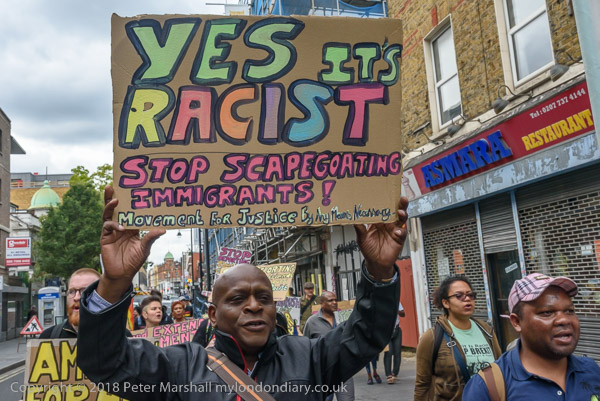
Months after the scandal over the Home Office’s treatment of the ‘Windrush Generation’ and their families first came into the national news, there seems to be no end in sight. Fresh revelations about the ‘hostile environment’ created at the Home Office, largely by Theresa May keep coming to light, new stories of deportations or continuing fights to stay in the UK, more on the deliberate destruction of historical records continue to come out, and the Home Office and government response is still sadly lacking in compassion.
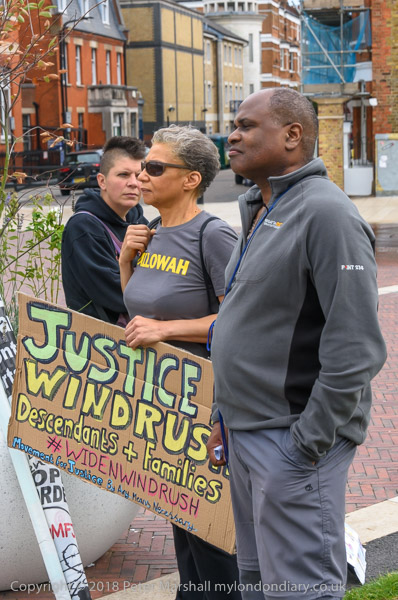
Demands are still being made to produce documents that few residents of the UK would have kept and peope are still being threatened with deportation, and we now know of many who have been deported and died abroad, away from the families they have here.
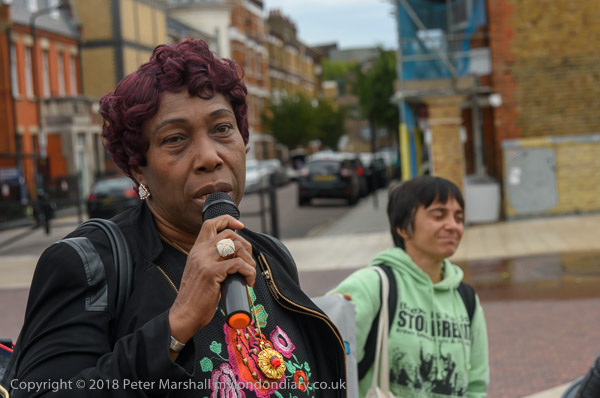
Several of those who are have been personally affected, some still having to fight to remain here spoke at the event which was organised by Movement For Justice, an organisation that has for years worked with detainees in immigration detention, and has taken the lead in organising protests at Harmondsworth and Yarl’s Wood detention centres in recent years.
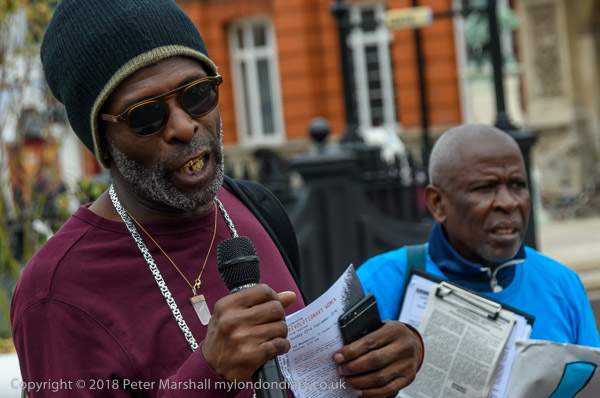
The protest began slowly with a rally in Windrush Square, its name commemorating the first wave of migrants lured to work in this country who arrived on the Empire Windrush, though many came in the following years, when UK organisations were actively recruiting to fill the gaps in the NHS, London Transport and other vital public services.
It’s the same racist hostile attitude to migrants that has also, along with a more general disregard of the poor that has led to disasters such as Grenfell, and unsurprisingly there are links. Many of those killed in that disaster were migrants, and among those affected were children and grand-children of the WIndrush generation.
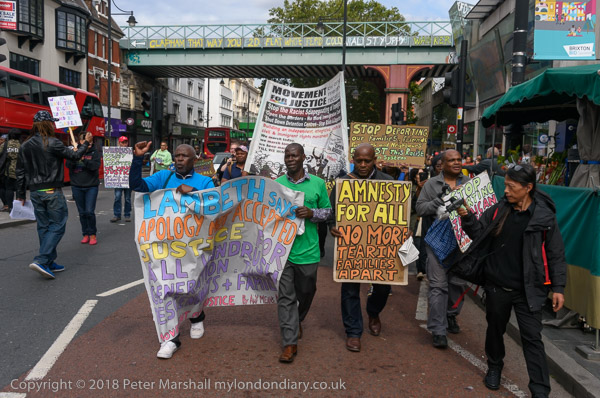
Brixton is where many of the Windrush generation settled, largely because they were given temporary accomodation in an large air raid shelter up the road in Clapham and went to Brixton Labour Exchange to find jobs. Friends and families moved into the area to keep up connections – and also to avoid the worst of the racism found in other areas of the city and country.
Their presence gave a new life to a rather tired part of London, creating a vibrant atmosphere in the area, which together with its good transport links and closeness to the West End has made it a prime target for gentrification. The march around Brixton made its way back to Windrush Square down Brixton Road, under the railway bridge on which the graffiti reads “Clapham That Way You 2D Flat White Tepid Colonialist Wanker”
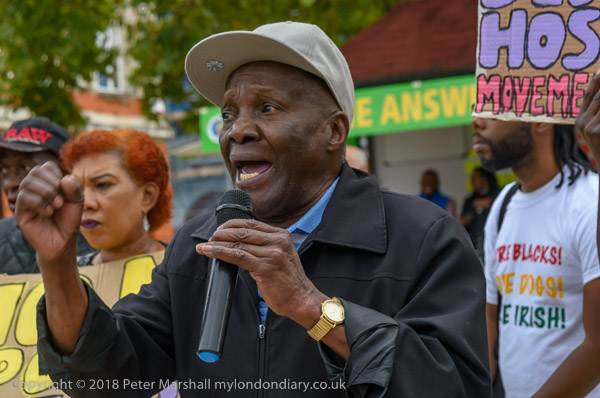
More on My London Diary at:
Justice for Windrush descendants
______________________________________________________
There are no adverts on this site and it receives no sponsorship, and I like to keep it that way. But it does take a considerable amount of my time and thought, and if you enjoy reading it, a small donation – perhaps the cost of a beer – would be appreciated.
My London Diary : London Photos : Hull : River Lea/Lee Valley : London’s Industrial Heritage
All photographs on this and my other sites, unless otherwise stated, are taken by and copyright of Peter Marshall, and are available for reproduction or can be bought as prints.
To order prints or reproduce images
________________________________________________________